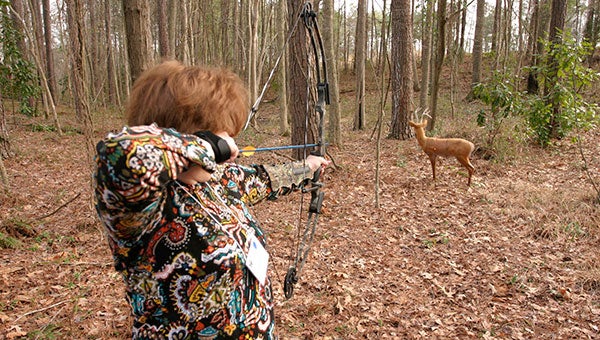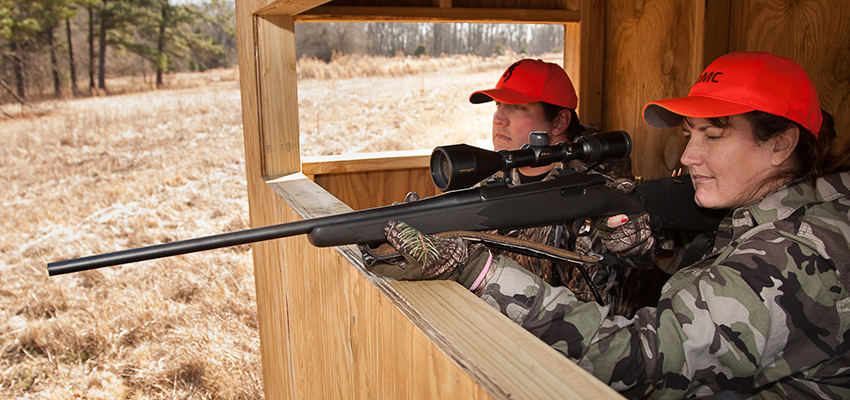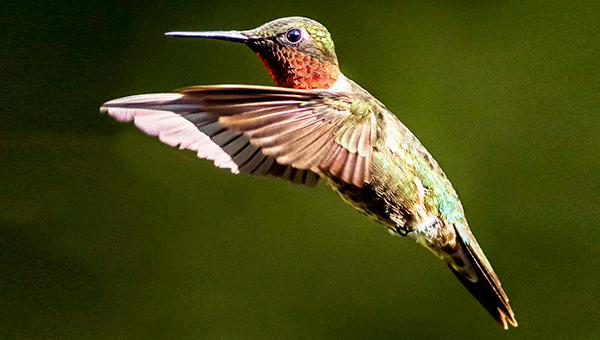Turkey Man Expo
Published 12:53 pm Thursday, February 26, 2015
By DAVID RAINER
Alabama Department of Conservation and Natural Resources
Montgomery is a special place for Evergreen’s Eddie Salter, known in the hunting community as the “Turkey Man.” That made it easy for Salter and David Harrell to pick a place for the inaugural Turkey Man Expo, which was held last weekend at the Montgomery Convention Center.
“This is where I won my first contest in 1981, to tell you how old I am,” said Salter, a two-time winner of the World Championship Turkey-Calling Contest he mentioned. “Dick Kirby, Paul Butski, Ben Lee were some of the names I beat that night. We had 2,500 people here just for a calling contest. I said there’s something about Montgomery that’s right in the heart of all the turkey hunters. After the years I’ve been involved in turkey hunting, I don’t live far from here, so I wanted to bring something to Montgomery that I can hang my hat on because I love turkey hunting so much. I can’t believe somebody hasn’t already brought a turkey-hunting expo here before.
“We’ve learned a lot from it and hopefully gained from it. We’re planning on putting it on for the next several years.”
Harrell, of Southern Land Brokers, said putting on an expo for the first time had been an experience completely different from his regular business.
“There’s an endless list of what we’ve learned this first year,” Harrell said. “We’ve certainly learned how to put on a show. Right now, we’re pleased with the way it’s turned out.”
Salter added: “The main thing is the contacts you need to get the vendors to come here. We hope we’ve learned some stuff about advertising, which direction we need to go next year. We felt this was going to be a learning curve. I talked to people at the Convention Center and they feel like we can have 400 or so booths in here. Right now, we only have about 100. We feel like we can grow it if we can get the turnout, the public support. We’ve done a lot of social media. We’ve had almost 4 million hits on our Facebook page across the nation, but we don’t know what that will translate into for the show.
“I hope we can get some comments about what they would like to see next year. Go to our Facebook page and let us know.”
With the spring turkey season only a few weeks away, Salter said he’ll be heading to the woods right away to see how the turkeys are acting with the recent spell of cold weather.
“My brother has been raising turkeys all of my life,” Salter said. “I pulled into his yard the other morning. It was 19 degrees and a gobbler was breeding a hen. As soon as we get a few warmer days, get out and walk the roadways looking for scratching. If you start seeing some scratching, start getting out early and start listening. If they gobble and then head north, go in about 10 or 11 o’clock and find out why they’re headed north or south or east or west.
“Learn to pattern turkeys. That can be some of the best advice. Sometimes it doesn’t take a turkey call. Just set up and he might walk to you.”
Salter said he sometimes locates gobblers by gobbling at the birds, but safety is premium when you attempt to gobble in the woods.
“Sometimes a turkey will gobble back at you,” he said. “It’s hard to kill a turkey if he won’t gobble. I like to gobble right next to my truck. You have to be real careful where you gobble. I wouldn’t do it on public ground.”
One person who is especially careful about where he lets loose a gobble is Preston Pittman, who has held five different world calling championships during his career, including the gobbling championship. Pittman has been shot twice after being mistaken for a gobbler.
Pittman also advises against gobbling in any public area or any area where you don’t know exactly who might be in the woods. What we talked about most at the expo was preseason preparation, including trying different chokes and turkey loads in your shotgun.
“Everybody is trying to push as much shot as they can down their choke tubes,” Pittman said. “What I have found in my 40-some-odd years of experience is that it can be better to go to a lighter load. For example, if you’re not getting good patterns out of your two-ounce loads, back off to an ounce and three-quarters.
“Also, if you go too tight on your choke restriction, you may have holes in your pattern. A 2-inch or 3-inch hole in your pattern can cause a miss. Open up the restriction a little more. The choke tubes have become so sophisticated as well as the turkey loads. They’re making specific turkey loads like Winchester’s Longbeard XR and Hevi-Shot that sometimes you’re trying to push too much shot through the choke. So try a lighter load or a little more open choke. I’ll just about guarantee you’ll get better results.”
Pittman said it’s hard to imagine the innovation that has occurred since he started calling turkeys.
“I’ve witnessed an industry literally being born,” he said. “With box calls, we used to chop up wood and sand it down on a belt sander. Now we have CNC machines that do that for us. When we first started coming out with turkey chokes, we didn’t know about hardening the steel or polishing the inside of the chokes. With the chokes I have out now, the choke gradually goes to the constriction as it comes out.”
Pittman also cautions not to take anything for granted when it comes to patterning a turkey gun.
“Just because you bought a Remington 870 the same day from the same sporting goods store as your buddy, it doesn’t mean those two guns are going to shoot the same,” he said. “Go to your buddies and swap some shells and try a variety of shells and chokes in your gun. I’m working with a manufacturer right now to get them to offer a box of shells that will have shells with different loads and shot sizes so that someone can go out and pattern their gun to see what shoots best.”
One of the big attractions at the Turkey Man Expo was the Bone Collector crew with lead man Michael Waddell, who suggests making hay while the sun shines early in the season.
“It seems early in the season the turkeys are still back in the hardwoods trying to scratch out what’s left of the food instead of in these green patches,” Waddell said. “The good news is, as soon as the turkeys start gobbling you’ll find the gobblers still grouped up. “Early season seems to be the best time to get these turkeys to respond to a call. You definitely need to attack quick and hard those first three or four days of the season. When you’ve got a limit of five, like you’ve got in Alabama, you might be able to get a couple knocked down early in the season.”
Waddell said he isn’t shy about calling to turkeys early in the season, but he keeps the volume down.
“I’m going to try to sound sexy to that gobbler,” he said. “I’m going to call to him, but I’m not going to call loud. Early in the season you can get those 2-year-olds super excited. I’ll cut and yelp and get them excited, but I won’t get loud.”
Alabama’s spring turkey season opens March 14 in most of the state. Visit www.outdooralabama.com for details.





